Bell Peppers are widely grown throughout the United States. Most Bell Peppers are grown outdoors in raised beds using drip irrigation and mulch. Bell Pepper is one of the most cultivated vegetable crops in the world. Characterized by a brightly colored exterior, Bell Peppers are a warm-season crop grown in temperate regions. Global production and consumption of Bell Pepper are continuously increasing.
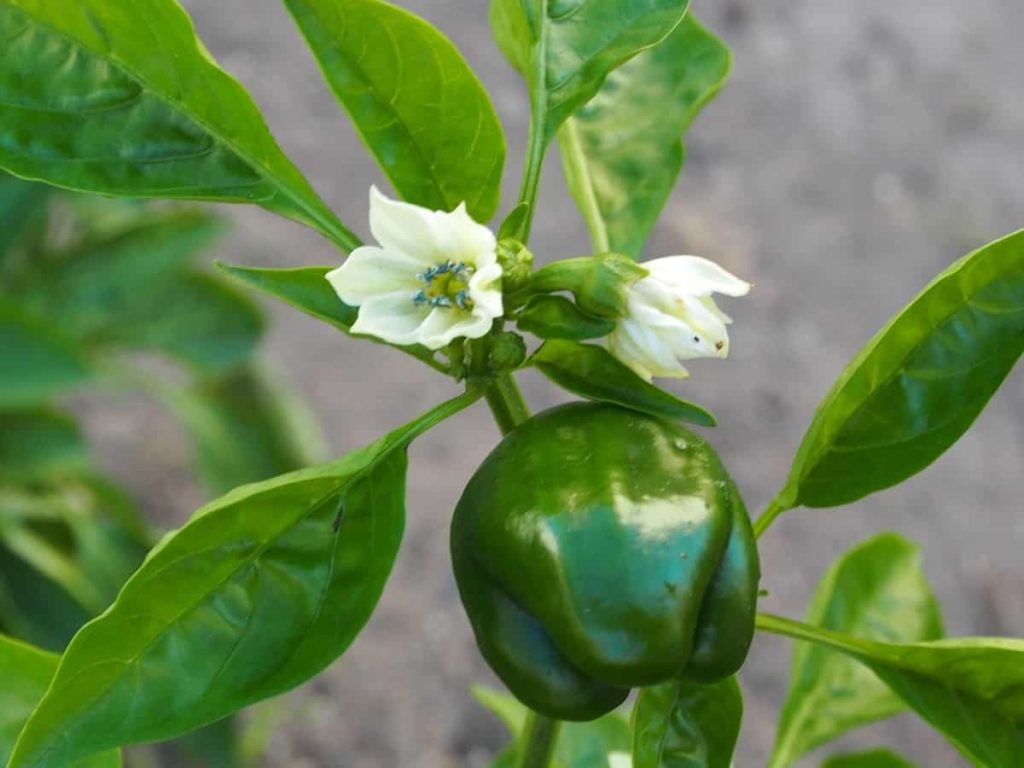
China is the largest producer of Bell Pepper, followed by Mexico and Indonesia. Other major producers in the Bell Pepper market are Spain, Turkey, and the US. Bell Pepper is a warm-season crop in different colors, shapes, and sizes. Their popularity makes growing Bell Peppers a profitable business option for any commercial or family farm.
How to start Bell Pepper farming in the USA
Requirements for Bell Pepper Farming in the USA
Bell Peppers like hot, humid, sunny weather. They grow well in full sun and should always be planted three weeks after the last frost date so they don’t get too cold. Plants need nutrient-rich soil without too many nitrogen levels. If you have used to apply chicken manure, use it, as Bell Peppers love it. Nutrient requirements change throughout the growing period. Field-grown Florida Bell Peppers are on the market year-round, from October to July.
Florida Bell Peppers are unavailable in high supply during late summer and early fall (July-September) due to high temperatures, high humidity, and frequent rains. The marketplace prefers that growers provide consistently high-quality products for as long as possible. It encourages large wholesale growers to produce in multiple locations to extend their season. Small, direct market farmers also look for ways to extend the season.
However, multiple locations are usually not practical. Therefore, smallholder farmers often find it more viable to adopt seasonally scalable cultural practices. Smallholder farmers traditionally use season extension methods such as transplants, multiple varieties, row covers, plastic mulch, low tunnels, high walk-in tunnels, and greenhouses. Bell Peppers are fruits because they grow from flowering plants and contain seeds—most people think of them as vegetables. Orange, red, and yellow Bell Peppers are very ripe green Bell Peppers.
Bell Pepper varieties in the USA
Common varieties of Bell Peppers used for commercial production include Aladdin, Aristotle, Brigadier, DoubleUp, Polaris, Telestar, and Wizard-X3R, to name a few. New Bell varieties can produce multiple colors from the start, which become lighter or darker as they mature. Popular types include Aladdin, Alliance, Bell-Boy, Big Bell, California Wonder, Camelot, Crusader, GatorBelle, Golden Bell, Islander, Lady Bell, Murango, Orange Blaze, Polaris, Rainbow, Stiletto, Summer Sweet, Sweet Chocolate, and Yolo Wonder.
Where is Bell Peppers grown in the US?
Bell Pepper is used as food, condiment, and spice. Today, most green Bell Peppers sold in the United States are grown in Florida. California, Texas, New Jersey, and North Carolina also provide a portion of the chili sold in stores. Wisconsin-cultivated Bell Peppers are available at farmers’ markets for a limited time during July, August, and September.
In case you missed it: Organic Capsicum Farming – Bell Pepper Cultivation
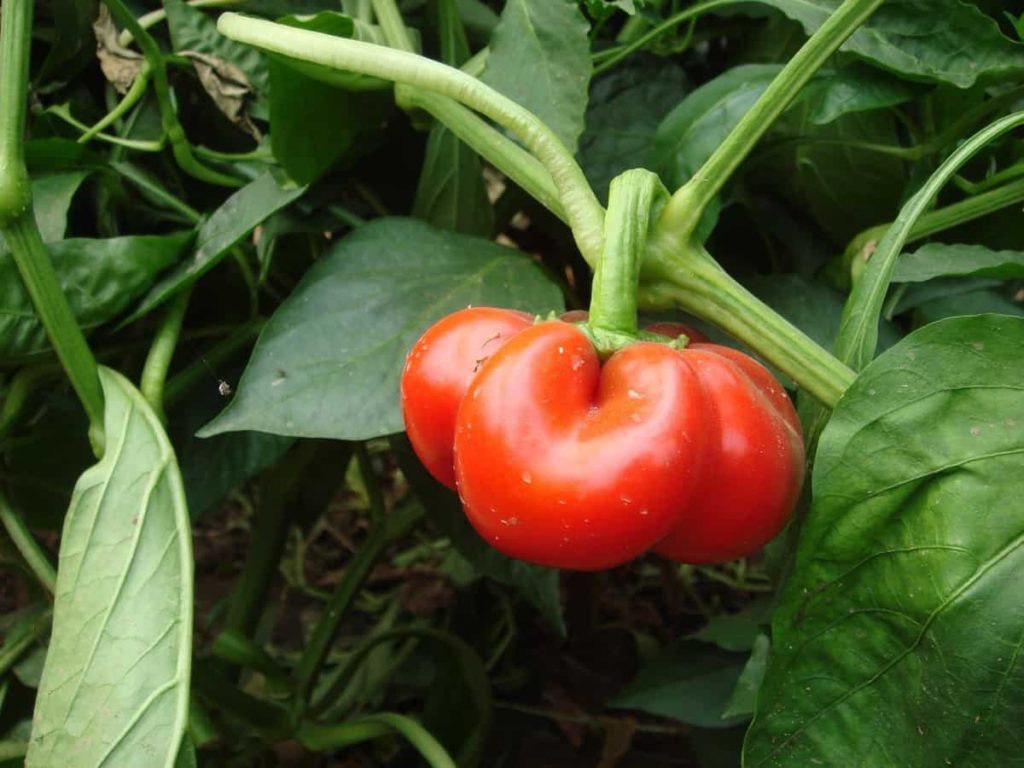
Although Bell Pepper is grown in many fields across the United States, California produces about 47 percent of the fresh market Bell Peppers grown in the United States. Pepper is botanically a fruit because it grows from a flower. However, when cooking, they are treated as vegetables.
California and Florida lead the Bell Pepper production in the United States, along with Georgia, Michigan, New Jersey, North Carolina, and Ohio. The top Bell Pepper growing states in the United States are California, Florida, Georgia, New Jersey, Ohio, North Carolina, and Michigan. Most imports of Bell Peppers into the United States come from Mexico, the second largest producer of Bell Peppers worldwide.
How to plant Bell Peppers in the USA
You’ll want to start your Bell Peppers in a greenhouse to start the growing season. You can do this up to 8 weeks before the last frost date. Start your seeds in planting mix and use a spray bottle to keep the soil moist until germination. Once the seeds have germinated, be careful to only sprinkle the soil as too much moisture can cause problems for the plant.
When the plants are ready, you can plant them outside using raised beds and black plastic mulch. The main advantage of growing Bell Peppers using raised beds will help provide better drainage, prevent certain insects, and prevent weed growth. Add some 2:3:2 compost to the soil before planting.
Then, loosen the soil to provide enough room for the roots. Place the plants as mentioned earlier, and you are almost done. Once planted, you should use stakes to prevent your Bell Pepper from falling over and use a mulch to help retain soil moisture. Again, you want to ensure you’re watering the roots, not the actual plant. You can achieve this through underground irrigation.
Bell Pepper production in the USA
Bell Peppers are widely grown throughout the United States. Most Bell Peppers are grown outdoors in raised beds using drip irrigation and mulch. The total US Bell Pepper harvested area is approximately 40,900 to 62,080 acres. Georgia, California, and Florida are the three largest Bell Pepper-producing US states. Bell Pepper growing areas in Florida have shown a significant downward trend due to increased market competition in Bell Peppers from Mexico and the phase-out of methyl bromide soil fumes.
Bell Pepper production has been an important economic contribution to the vegetable industry in Florida and California. Production in Georgia is significantly lower than in California and Florida. US Bell Pepper production followed a steady upward trend. Although production in all three states showed an upward trend, production growth in Florida was significantly behind California and Georgia.
Most Bell Peppers produced in the United States are still grown in the field using drip irrigation and mulch. In addition to field-grown Peppers, small quantities of locally produced, greenhouse-grown Bell Peppers are also available year-round. A typical field of fresh market Peppers is harvested by hand every week or so over four to six weeks.
Conditions for Bell Pepper Farming in the USA
Growing Bell Pepper production in Florida varies by region. Most of the state’s crop is transplanted in double rows on raised beds protected by plastic sheets. Beds are usually washed before planting to treat soil insects, pathogens, nematodes, and weeds. In other states and parts of the US, growers may not wash or use plastic sheets, depending on local conditions.
In case you missed it: Capsicum Farming in Polyhouse (Bell Pepper) for Profit
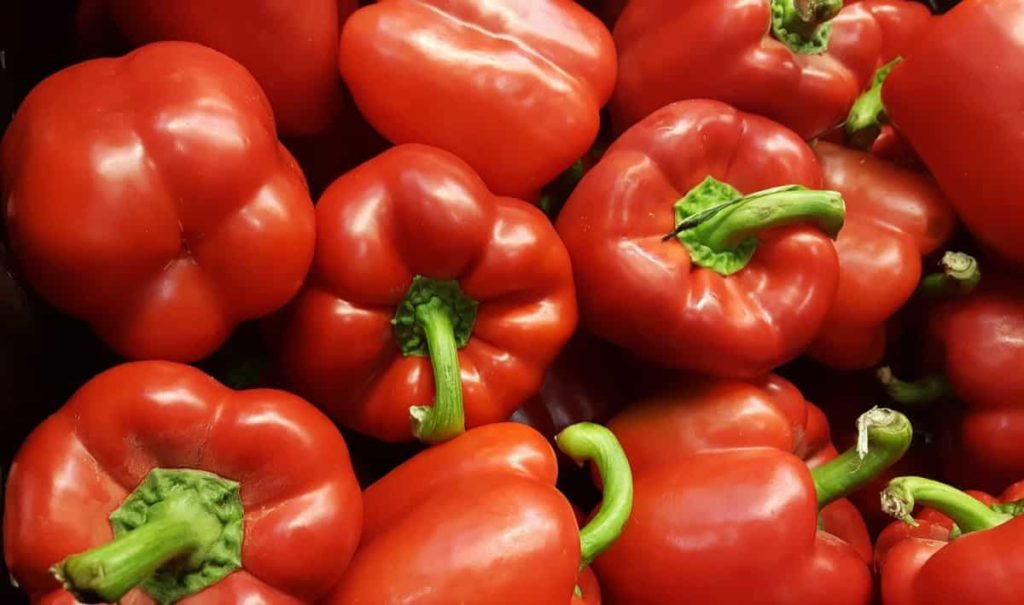
Safe cultural production methods for Bell Peppers come in many forms, such as greenhouses and high tunnels. This form of production allows the farmer some control over weather events, pests, water, land use, pesticides, and fertilizer inputs. Most California Bell Pepper production is irrigated using drip irrigated systems and, to a lesser extent, furrow irrigated. Drip irrigation consists of a 2 to 10-inch deep water line with one or two drip lines per raised bed.
When the furrow irrigation system is used in other states, the water is channeled along parallel trenches on either side of raised beds. Water flows into the raised bed to irrigate plant roots. An overhead sprinkler often establishes the first plants until they grow. Bell Peppers are one of the most fertile crops grown in California. The land is fertilized with nitrogen, potassium, and phosphorus as a side dressing before sowing or drip irrigation during the growing season.
Bell Peppers need deep watering, about one to two inches per week. Although Bell Peppers like warm weather, they will not thrive in extreme heat, so gardeners exposed to high temperatures should water them twice a day if necessary. Dry conditions will result in bitter-tasting Peppers, but too much water can suffocate the roots or cause flower rot, which occurs when the soil depletes calcium. Monitor your water carefully, keeping it as balanced as possible.
Bell Pepper plant care
Proper care of your Bell Pepper will ensure the most significant harvest, so ensure you’re prepared to do what’s necessary. Firstly, regularly water the Pepper to prevent the soil from drying. For this reason, drip irrigation is recommended as it will keep the water exactly where it is needed. It would help if you also weed the beds regularly. Weeds are not only unsightly, but they also take away important nutrients from your crops.
Mulch will help, but you may need to use an herbicide to keep the weeds at bay. Water the plant regularly with 1 to 2 inches of water per week. It does not mean watering less. Bell Peppers are well watered but should be allowed to dry out almost completely between watering. They need this period of relatively dry. Slow, deep watering helps strengthen the root system. Do not allow Pepper plants to wilt, reducing fruit yield and quality.
Inconsistent watering also makes Peppers prone to blossom end rot. In hot or desert climates or in the height of summer, you may need to water every day. Remember that at elevations of about 4,000 feet in desert areas, sweet Bell Peppers often fail to develop a thick, fleshy wall. Bell Pepper is very sensitive to heat.
Flowers may drop if plants are stressed—if it is too hot, cold, or insufficient water. Use shade cloth or row covers to prevent heat stress (exposure to direct sunlight during hot weather will cause Peppers to become papery, blistered, or papery). Mulch to retain moisture and prevent weeds. Weed carefully around the plants to avoid disturbing the roots.
In case you missed it: Capsicum Farming (Colored), Bell Pepper Cultivation Tips
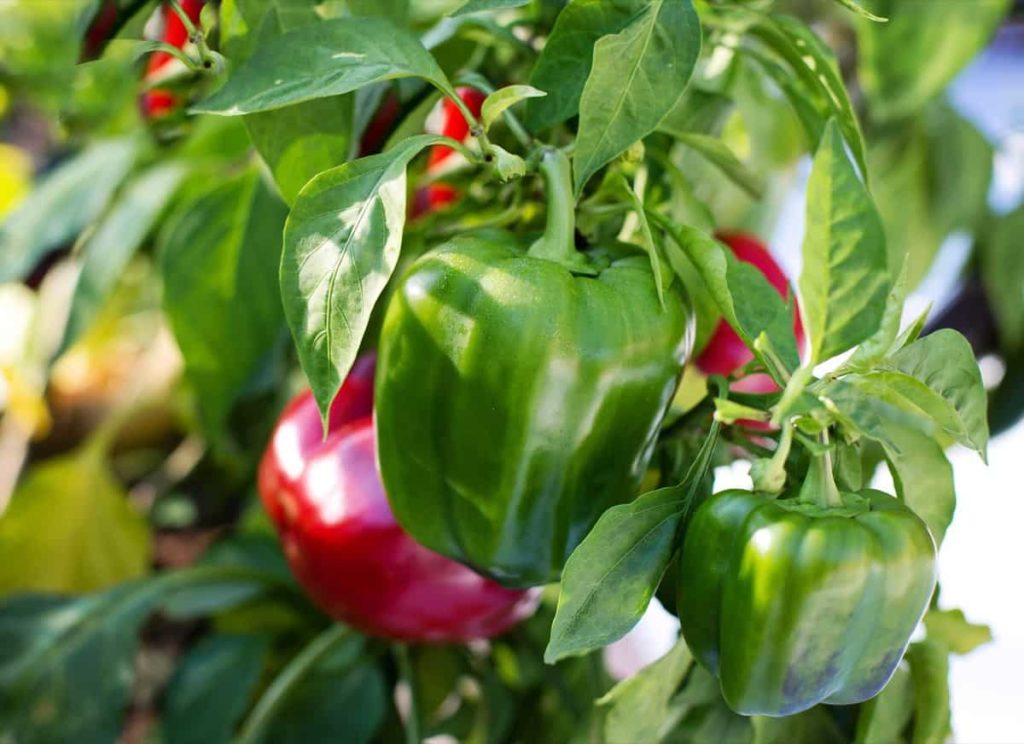
Bell Pepper harvesting season in the USA
Bell Peppers are produced and marketed year-round in the USA and are mostly sold as fresh produce. California’s Bell Pepper shipping season runs from April to December, with peak volumes from May to July. Florida shipments run from October through July, with peak volumes between March and April. In addition to field-grown Bell Peppers, greenhouse Bell Peppers are marketed year-round.
Bell Peppers can be harvested when they reach the immature green stage or fully red or yellow depending on the plant variety. It is not uncommon for mature Peppers to be harvested from the same field. This decision depends on the current market price. Black Pepper used for freezing or dehydration provides a secondary market for Bell Pepper. Fields of fresh market Peppers are harvested every week for four to six weeks. Almost all Bell Peppers are harvested by hand and packed in bulk boxes or trailers for transport to the packing house.
Most Bell Pepper crops are sold as mature green Peppers, but growers receive a premium for limited quantities of other colors. Colorful Bell Peppers follow a mature green state and turn brown as they ripen on the vine. The premium reflects that brightly colored Bell Peppers (red, yellow, orange, purple, brown, and black) are more expensive to produce, have higher field losses, and are harvested at the green stage.
Bell Pepper yield in the USA
The USA produces an impressive amount of Bell Peppers each year, about 1.6 billion pounds, but the nation imports about 35 percent of the total to meet consumer demand. California, Florida, and Georgia are the top Pepper-producing states, and China is the top global producer. Florida’s average price was higher than the national average due to its early production season. US Bell Pepper exports are lower than imports.
Although the USA is one of the world’s largest producers of Bell Peppers, imports make up a large portion of total US Bell Pepper consumption. Most imports of Bell Peppers into the United States come from Mexico, the second largest producer of Bell Peppers worldwide. Low labor costs, the depreciation of the Mexican peso, and support from the Mexican government have made Mexican exporters more competitive than their American counterparts.
It has given a competitive edge in the competition. Production in Mexico has extended its growing season under protective structures, allowing it to supply Bell Peppers to the US market year-round. Yields in Florida (360 cwt per acre), California (455 cwt per acre), and Georgia (280 cwt per acre) were 4%, 52%, and 65% above their respective averages. Major export destinations include Canada, Germany, Japan, and the United Kingdom.
Bell Pepper marketing in the USA
Bell Peppers are produced and marketed throughout the year. Bell Peppers are generally sold as fresh produce, although Bell Pepper flowers are also edible. Bell Peppers are generally grown for both fresh and processed markets. These include the traditional “blocky” three- to four-lobed forms and the taller, more pointed varieties known as European Lamuyo varieties.
Both hybrid and open-pollinated varieties are popular, with a trend toward greater use of hybrids. However, hybrids have higher seed costs. To control costs, growers use transplants instead of direct seed. Open-pollinated varieties can either be transplanted or seeded in the field. Fresh market Peppers are produced in Pennsylvania from early June to late October.
Several primary marketing alternatives are available to the chili farmer: wholesale markets, cooperatives, local retailers (grocery stores), roadside stands, farmers’ markets, community-supported agriculture (CSA), pick-your-own operations, and processing firms. When planning production, first consider your capacity and market access.
In case you missed it: Top 18 Steps to Boost Chilli/Pepper Yield: How to Increase Production, Quality, and Tips
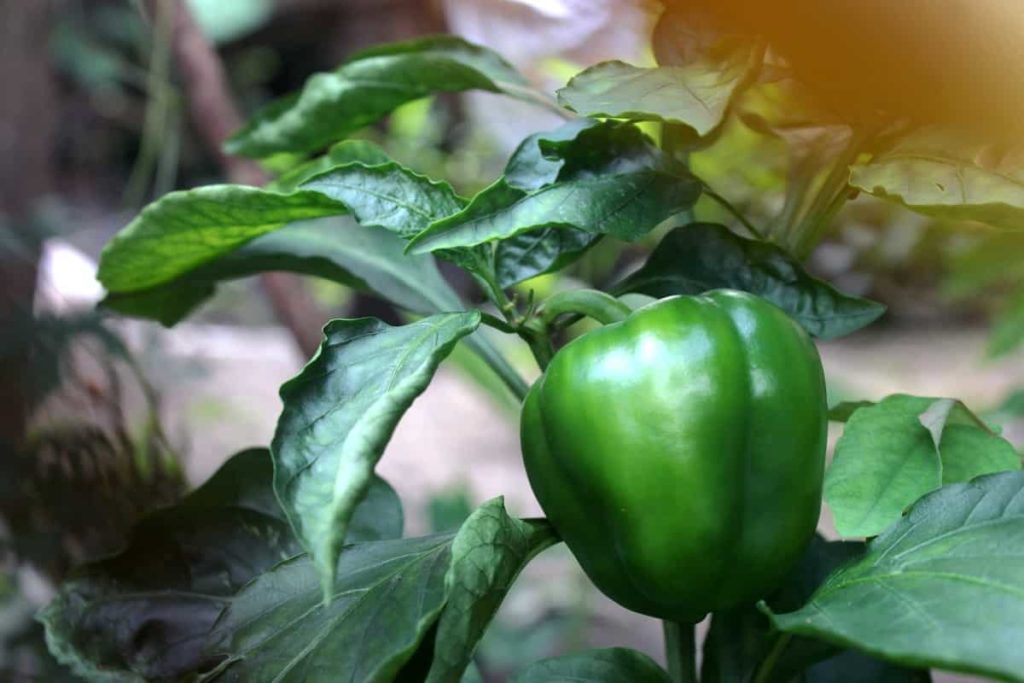
Frequently asked questions about Bell Pepper farming in the USA (FAQ)
Is growing Bell Peppers profitable?
Colored Bell Peppers can potentially be a profitable crop for USA farmers. However, infrastructure costs, marketable yields, and prices must be considered.
Do Bell Peppers need a lot of water?
As a general rule, Bell Pepper plants should be watered about once a week and allowed to drain well. This frequency can vary based on temperature, wind, and the size of the plant and its growing container.
Why are my Bell Pepper leaves curling up?
Insects such as aphids, thrips, mites, and whiteflies cause leaf curl with their feeding activities on Bell Pepper plants. Mature leaves may develop mottled or cracked areas, dry out or fall off, but leaves fed during development are randomly curled or curled depending on the feeding location.
Do Bell Peppers grow well in Florida?
Because Bell Peppers require warm loamy soil, moderate temperatures, full sun, and plenty of moisture, Florida is a great place to produce Bell Peppers from late fall through spring. Moisture comes in many forms, but rain is the most common form in Florida.
Why are my Bell Peppers so small?
If your Peppers are undersized, they are most likely not getting enough water, although their size may be changed due to your climate or your planting method.
How often do you fertilize Bell Peppers?
Most fertilizers are given weekly or bi-weekly. Don’t over-fertilize and expect good things – Bell Pepper plants need a steady supply of nutrients, not an abundance of nutrients all at once. Some fertilizers are meant to be added to the soil before transplanting.
Do Bell Pepper plants like coffee grounds?
Coffee grounds are a good nitrogen source and can give your Pepper plants the healthy growth that Bell Peppers love. You can sprinkle the soil around the plants in the garden bed. From there, they are broken down into the best nutrients for your plants.
In case you missed it: Capsicum Farming in Polyhouse (Bell Pepper) for Profit
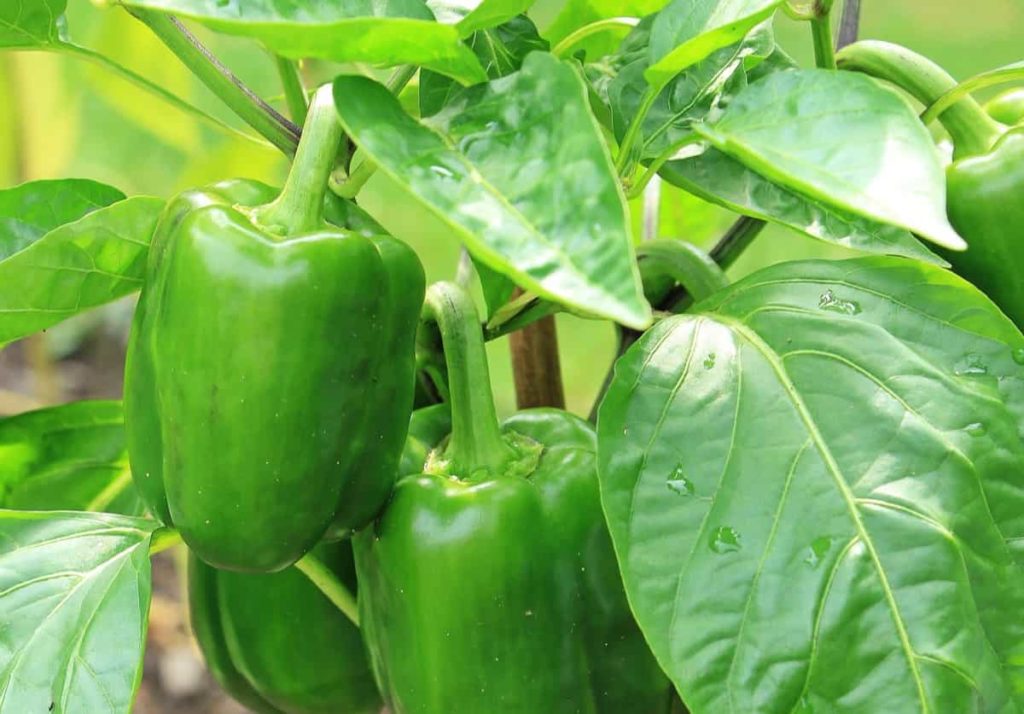
Which states produce the most Bell Pepper?
Mexico is the second largest producer after Indonesia, Turkey, Spain, and the United States. California is the largest producer of black Pepper in the US, with about 320,000 metric tons annually.
Conclusion
Bell Peppers are the most popular vegetable in the USA. The scientific name of Bell Pepper is Capsicum annum. Under the right conditions, Bell Pepper plants can live for many years, but only if you live in a climate that doesn’t experience true winters. In climates with harsh winters, plants will only last for the first growing season of the garden in which you plant them. Today Bell Peppers are produced all over the world. America ranks fifth in total production. This guide to help you learn how to grow Bell Peppers in the United States.
- Economical Aquaculture: A Guide to Low-Budget Fish Farming
- 15 Common Planting Errors That Can Doom Your Fruit Trees
- How to Make Houseplants Bushy: Effective Tips and Ideas
- Innovative Strategies for Boosting Coconut Pollination and Yield
- Pollination Strategies for Maximum Pumpkin Yield
- The Complete Guide to Chicken Fattening: Strategies for Maximum Growth
- Natural Solutions for Tulip Problems: 100% Effective Remedies for Leaf and Bulb-Related Issues
- Revolutionizing Citrus Preservation: Towards a Healthier, Greener Future
- Natural Solutions for Peony Leaf and Flower Problems: 100% Effective Remedies
- Maximizing Profits with Avocado Contract Farming in India: A Comprehensive Guide
- Natural Solutions for Hydrangea Problems: 100% Effective Remedies for Leaf and Flowers
- The Ultimate Guide to Choosing the Perfect Foliage Friend: Bringing Life Indoors
- From Sunlight to Sustainability: 15 Ways to Use Solar Technology in Agriculture
- The Ultimate Guide to Dong Tao Chicken: Exploring from History to Raising
- The Eco-Friendly Makeover: How to Convert Your Unused Swimming Pool into a Fish Pond
- Mastering the Art of Delaware Chicken Farming: Essentials for Healthy Backyard Flocks
- 20 Best Homemade Fertilizers for Money Plant: DIY Recipes and Application Methods
- How to Craft a Comprehensive Free-Range Chicken Farming Business Plan
- Brighten Your Flock: Raising Easter Egger Chickens for Beauty and Bounty
- How to Optimize Your Poultry Egg Farm Business Plan with These Strategies
- Subsidy for Spirulina Cultivation: How Indian Government Schemes Encouraging Spirulina Farmers
- Ultimate Guide to Raising Dominique Chickens: Breeding, Feeding, Egg-Production, and Care
- Mastering the Art of Raising Jersey Giant Chickens: Care, Feeding, and More
- Ultimate Guide to Raising Legbar Chickens: Breeding, Farming Practices, Diet, Egg-Production
- How to Raise Welsummer Chickens: A Comprehensive Guide for Beginners
- How to Protect Indoor Plants in Winter: A Comprehensive Guide
- Ultimate Guide to Grow Bag Gardening: Tips, Tricks, and Planting Ideas for Urban Gardeners
- Guide to Lotus Cultivation: How to Propagate, Plant, Grow, Care, Cost, and Profit
- Agriculture Drone Subsidy Scheme: Government Kisan Subsidy, License, and How to Apply Online
- Ultimate Guide to Raising Araucana Chickens: Breed Profile, Farming Economics, Diet, and Care
- Bringing Hydroponics to Classroom: Importance, Benefits of Learning for School Students
- Ultimate Guide to Raising Polish Chickens: Breed Profile, Farming Economics, Diet, and Care
- Ultimate Guide to Raising Australorp Chickens: Profile, Farming Economics, Egg Production, Diet, and Care
- Silkie Chicken Farming: Raising Practices, Varieties, Egg Production, Diet, and Care
- Sussex Chicken Farming: Raising Practices, Varieties, Egg Production, Diet and Care
- Homemade Feed Formulations for Livestock: Discover Cost-effective Starter to Finisher Feed Recipes